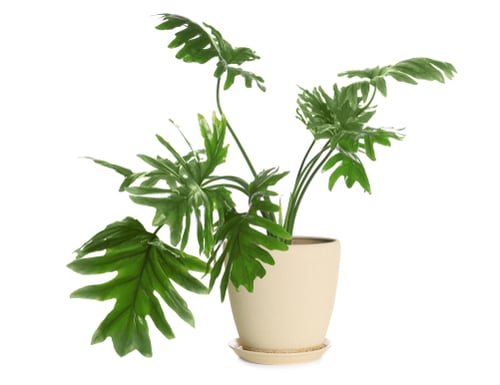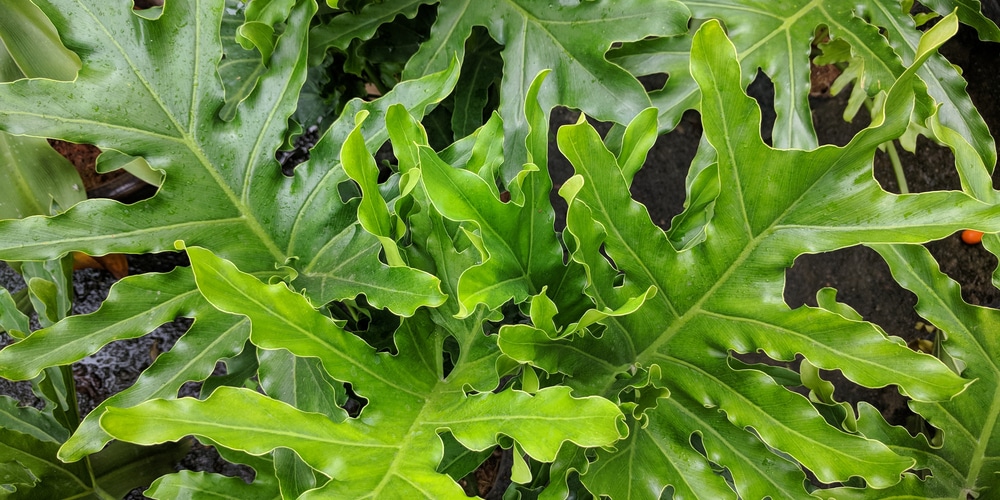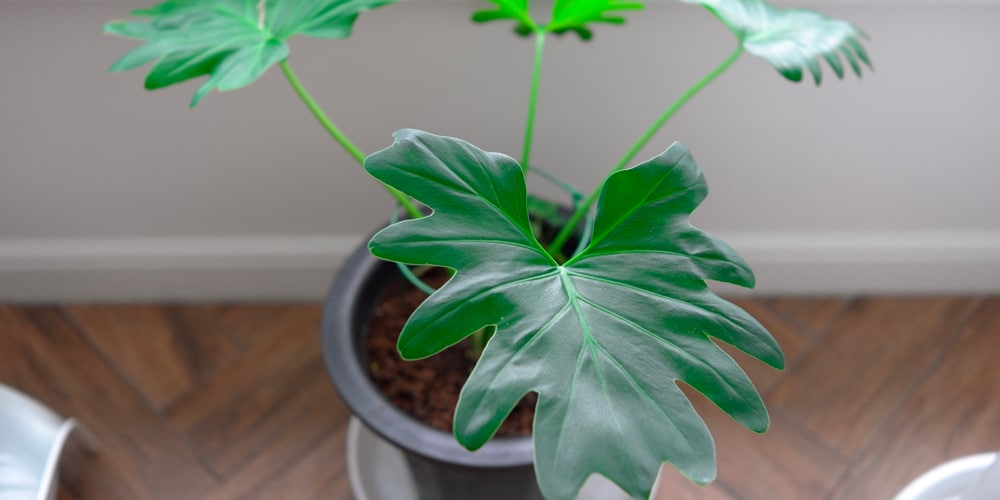Philodendron Selloum is an exceptionally beautiful foliage plant, which is usually grown for its impressive leaves. When mature, the plant forms a sturdy trunk, making this species one of the true giants of the Philodendron family. These plants are native to South America and are commonly found growing in the Brazilian rainforests. They like tropical conditions with high humidity and warmth. Let’s look at how to grow and care for a Philodendron Selloum.
What is a Philodendron Selloum?

Philodendron Selloum is a large and impressive plant that can grow to 4 or 5 feet in height with leaves up to 3 ft (90 cm) long and 2 ft (60 cm) wide. The plant is part of the Araceae family and has thick stalks which support the leaves. The leaves droop as they mature and are glossy and dark green. These plants are commonly referred to as hope Philodendron and are commonly kept as houseplants worldwide. They can also be grown outside in the right climate (USDA zones 9 to 11).
Philodendron Selloum are toxic to humans and animals if ingested. They can also cause skin irritation due to their sap. These plants should be kept out of the reach of curious children and pets.
How to Care for a Philodendron Selloum
Philodendron Selloum can be difficult to care for because its natural habitat includes tropical rain forests, which are naturally humid and warm with abundant rainfall year-round. The challenge is to create conditions in our homes that mimic these conditions as closely as possible without allowing the plants to languish or become diseased. Here are some tips to help you grow a thriving Philodendron Selloum.
Watering Requirements
Water thoroughly and then allow the top 50% of the soil to dry out before watering again; never let this species sit in water. If the ground becomes waterlogged, your plant will suffer from root rot. The best way to test for moisture is with your finger; insert it into the top 2 inches (5 cm) of soil and feel for moisture. If the soil feels dry, it’s time to water.
Soil and Repotting
Philodendron Selloum does best when grown in loose, well-drained soil that is high in organic material. A peat-based potting mix works very well and will stay moist longer while still allowing good drainage. You can also add some perlite, moss, and sand to the soil. These plants like neutral or slightly acidic soil, so use soil with a pH range of between 5.0 and 7.0.
Philodendron Selloum will grow very large in containers, but they do require more frequent repotting than most plants to replenish the soil after the plants get root bound from their rapid growth rate. The best time to repot this species is in the spring, when new leaves are just beginning to emerge. You can also add some stones or gravel to the bottom of your pot to help with drainage.
Sunlight Needs
Philodendrons do well in bright indirect light but avoid excessive sunlight, which can scorch their leaves and lead to leaf drop. It thrives under fluorescent lights indoors during the winter months and should be moved outside when the weather is warm for summer growth.
Temperature
The Philodendron Selloum plant does well in many temperature ranges, but it will drop its leaves if exposed to freezing temperatures. It prefers a minimum of 50 F at night and up to 85F during the day. Philodendrons can be affected by draughts, so don’t leave your plant near an open window, door, or air conditioning.
Many people make the mistake of leaving Philodendrons near heat sources. This isn’t a good idea. Although Philodendrons are tropical plants, their leaves can dry out and look dull and damaged if exposed to heat.
Fertilization
Fertilize frequently with a balanced fertilizer diluted to half the strength listed on the label for house plants. For best results, use a fertilizer that contains micronutrients in addition to nitrogen, phosphorous, and potassium. Excessive nitrogen will produce leggy growth, so measure carefully when feeding this species. Philodendrons are susceptible to fluoride toxicity, leading to leaf tip burn caused by excess fertilizer, so be careful what kind of fertilizer you use.
Propagation
New plants can be propagated from stem cuttings that are rooted in water or moist perlite. It’s crucial to use a rooting hormone to encourage roots to form more quickly. The rooted cutting can then be transplanted into a pot of soil. Keep your plant inside where it will continue growing, before being moved outdoors in summer.
Humidity
Like the Philodendron Grazielae, the Philodendron Selloum plants require high levels of humidity and like the air around them to contain moisture. Wild plants grow under large trees in tropical rain forests where humidity is extremely high; they are used to warm, misty conditions. They appreciate high humidity, but their root system is very sensitive to water-logged soils.
Aim to provide at least 50% humidity for your plant. You can mist your plant’s foliage, but be careful not to let excess moisture build up on the leaves, as this can cause fungal infections.
Other ways to increase the humidity levels for your plant include grouping tropical plants or using a humidifier. Alternatively, place a tray with water and pebbles underneath your plant. As the water evaporates, it will provide moisture to the plant’s leaves.
Pests and Diseases
The Philodendron Selloum is not prone to insects or fungus, but you may find aphids or mealybugs on older plants. If that’s the case, wipe them off with a wet cloth and spray the plant with mixed half-strength insecticidal soap for best results. Other sap-sucking insects that affect Philodendron include spider mites and scale.
Check
Conclusion
Philodendron Selloum is a beautiful large-leaved plant that has been grown by collectors for many years. It’s an easy-care species that will adapt to almost any growing conditions provided you give it plenty of light and water thoroughly whenever the soil looks dry – remember to allow the top 50% of the soil to dry out before watering again!

